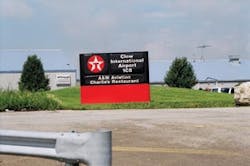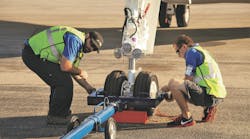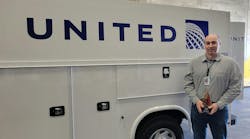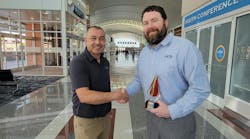Some 40 years ago they started planting houses instead of corn in the fields here some 30 miles west of downtown Chicago. Since that time, the Village of Bolingbrook has become just another part of the greater urbanity the locals call Chicagoland. Amidst that rapid growth, Clow International Airport has survived, and in 2004 was purchased by the village in an effort to ensure it remained a part of the community's future. Ironically, it was through the efforts of a commercial real estate developer that the private air strip remained untouched.
It's called 'International' because it sits alongside International Parkway, immersed in commercial development. But it is strictly general aviation, with a 3,600-foot asphalt runway and adjacent taxiway. There is no room for a runway extension - that land opportunity faded years ago.
Yet, city officials concluded that the airport was worth saving, as a community asset and part of the city's long-term economic future.
The village purchased the airport from Joseph DePaulo for a reported $13.2 million. Today, DePaulo serves as the airport manager while maintaining tenant offices for his commercial development firm, DePaulo, Incorporated.
DePaulo relates that he bought the 77-acre facility in 1998 from the original owner, Boyd Clow. Prior to that, DePaulo headed up a custom home builder in the region for some 30 years.
DePaulo says he "got bored with it" and was growing increasingly frustrated with the rapidly rising costs of building high-end custom homes. He sold off his architectural business and turned his company's attention to commercial development, and to the airport.
"When I bought it, it wasn't cheap," comments DePaulo. "Maybe it caught me at the right time - some mid-life crisis thing that I forgot to figure the dollars and cents on. I thought, maybe we can see if we can build an airport; we've never built one of those.
"I did it all backwards: I bought an airport; I then bought an airplane; and, then eventually I learned how to fly. I was totally ignorant of aviation before I bought this."
'Money on the Table'
Several years ago, led by Bolingbrook mayor Roger Claar, the village approached DePaulo to determine his plans for the property, he says. "We didn't know," he answers. "It's an expensive piece of property; a great location. At one time we thought we'd put some townhouses here and other things, which made a lot of sense.
"Knowing my business and my contacts, there were people starting to knock on my door about purchasing the land."
After a period of negotiations, Bolingbrook agreed to purchase the airport and issued general obligation bonds for the purchase, according to DePaulo. "The price was less than I could have gotten on the open market," he says. "But I didn't mind leaving money on the table and leaving it here; plus, I enjoy it."
Today, there are some eight businesses operating out of Clow, including Air Angels, a rotary air medical operation, and A&M Aviation, which offers flight training and serves as the fixed base operator. The flight training operation, which DePaulo calls one of the best and busiest in the state, accounts for the majority of the airport's 20,000 annual aircraft operations.
All the original buildings on Clow when DePaulo purchased the airport were quickly demolished for commercial development, he relates. "Over the years we improved the runway; expanded the taxiway, the ramp; built all the buildings out here - the office, the flight school, the restaurant, the maintenance hangars," he says. The city is reportedly in the midst of investing some $3.8 million additional into the facility, the key components being a runway widening to 100 feet, lighting infrastructure, and navaids.
DePaulo says that the village has designated all future development on the airport property to be aeronautical, and it recently completed construction of a new series of storage hangars, which he says is in high demand. The village is also considering looking to outside developers for its next stage of T-hangars.
Explains DePaulo, "Hangar space is just immensely needed. The goal is to put in a row of about 35 different T-hangars, besides the community type hangars now going in. Then we can start repaving our tiedowns, because we're also short on ramp space."
Meanwhile, an airport layout plan was recently completed as the village looks to get the state's support for future infrastructure needs.





